By Ana Leal Cornejo
What were once busy local shops and loud street noise, became boarded up storefronts and eerie silence. The outside world seemed to pause as people transformed their indoor living spaces into home offices, home gyms, and just about every variation of what a home could be. Because public health officials told everyone to stay home, people diversified their spaces into whatever they needed in order to exist from home during the COVID-19 pandemic. On a surface level, the regulations seemed clear, but they did beg the question, “What happens to the people who don’t have a home?”.
In the fall of 2020, nine community groups in London Ont. held a meeting to discuss the framework and logistics of creating temporary accommodations for the unsheltered during the winter. As time went by more groups joined the initiative: some were faith-based others were harm reduction groups or LGBTQ-focused and so on. While navigating public health restrictions often meant meeting over Zoom or in smaller groups, community collaboration was crucial to helping unhoused folks during the harshest months of the year.
“All of us put [our differences] aside. We decided that what is most important is our people. Let’s keep them alive. Let’s give them a place that makes sense for them in terms of community, dignity and independence, ” said Gil Clelland, the pastor at Sanctuary London, one of 18 organizations that now form the Winter Interim Solution to Homelessness (W.I.S.H).
While community groups started brainstorming how to make the winter survivable for those who were unhoused, the City of London’s Coordinated Informed Response Manager, Debbie Kramers, faced the same issue.
“When the pandemic hit, public spaces like libraries, Goodwill, or Tim Horton’s where [people experiencing homeslessness] would normally go to use a washroom or warm up, no longer were allowing people to come in. Even the basic necessities were taken away,” said Kramers.
In an attempt to keep the spread of COVID-19 from reaching the already growing unsheltered community, the city began to house in hotels those who were most vulnerable due to their age or medical history. The city also implemented “Comfort Stations”, porta potty stations in the downtown and Hamilton Rd. core where people could use the washroom and clean up. Two day-sites were also created to provide spaces for community to happen while still meeting physical distancing restrictions.
The W.I.S.H proposed the idea of the pop-up shelters to City Hall, who ultimately approved funding. Six weeks after that initial community group meeting, 80 staff members had been hired and trained. Unhoused folks began moving into the first of two pop-up shelters on Dec. 21 2020.
On that day, Johnny Courey, an outreach worker for Ark Aid Street Mission, received a list of names of the people accepted into the pop-up shelters. Surges of adrenaline shot through his body as he read through the list. With each name, each person it represented and their story played in his head. His excitement abruptly ceased when he got to the end and like a ton of bricks, the names not printed on the list hit him. This moment of bitter-sweetness was interrupted by duty.
Courey had spent years building friendships with the residents he encountered as a community outreach worker. He had helped many of his friends fill out applications in order to be accepted into these shelters. Courey knew his friends well enough to find them around the city. He set out armed with specific coffee orders to the hotspots he knew he might find his friends. The names that weren’t on the list haunted him again and he knew that he would also be the one to tell some of his friends that they would be facing another winter outside.
“Being able to offer them something that is theirs, is a beautiful thing. But the hardest part is that I can’t help with housing all the time, I can’t just make an apartment appear,” said Courey.
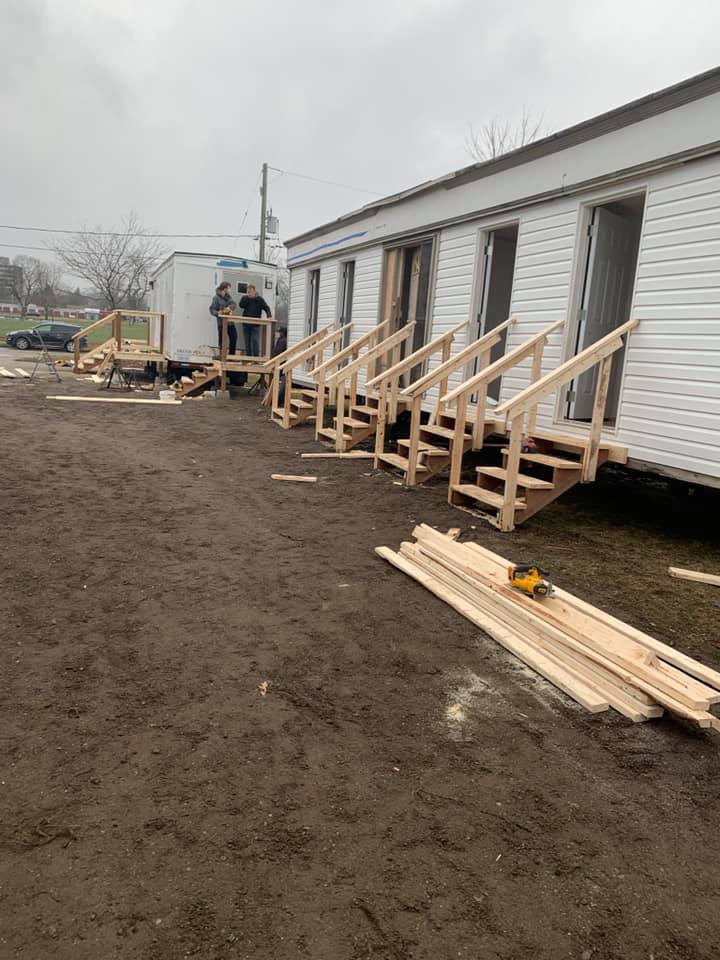
Elizabeth St. W.I.S.H site under construction in December 2020 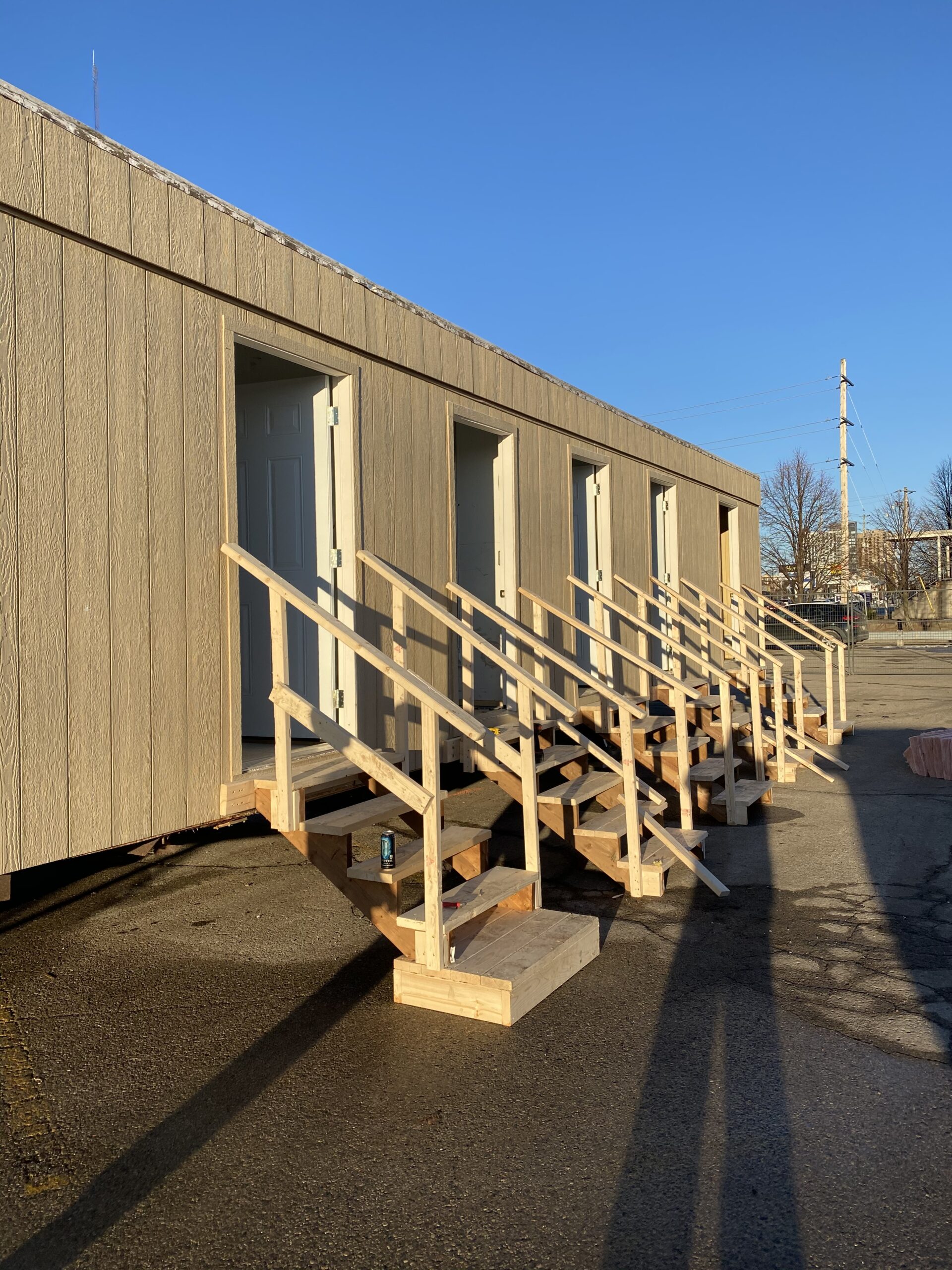
Elizabeth St. W.I.S.H after completion 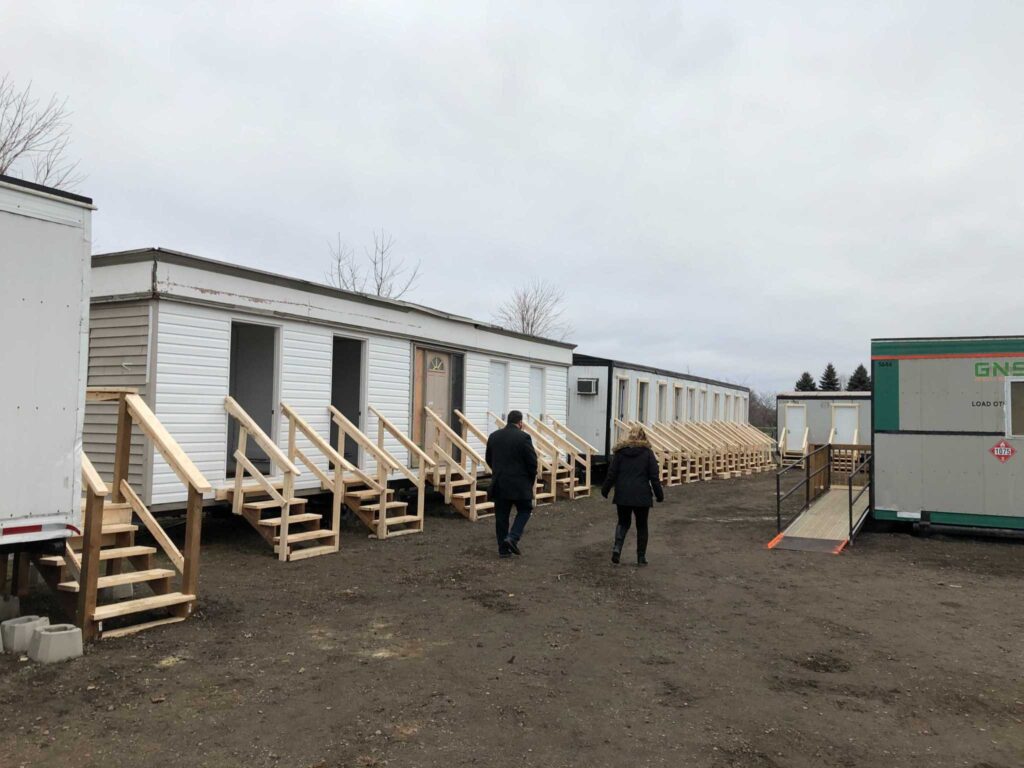
Craig Cooper and Debbie Kramers walking through Elizabeth St. site after construction 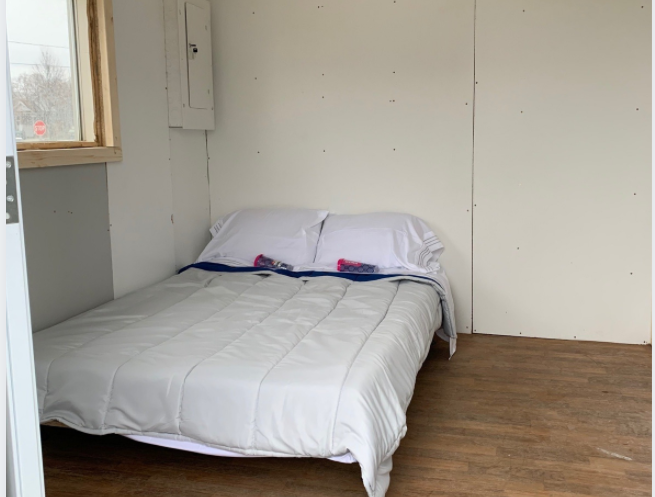
An individual room with a double bed to accommodate for couples. 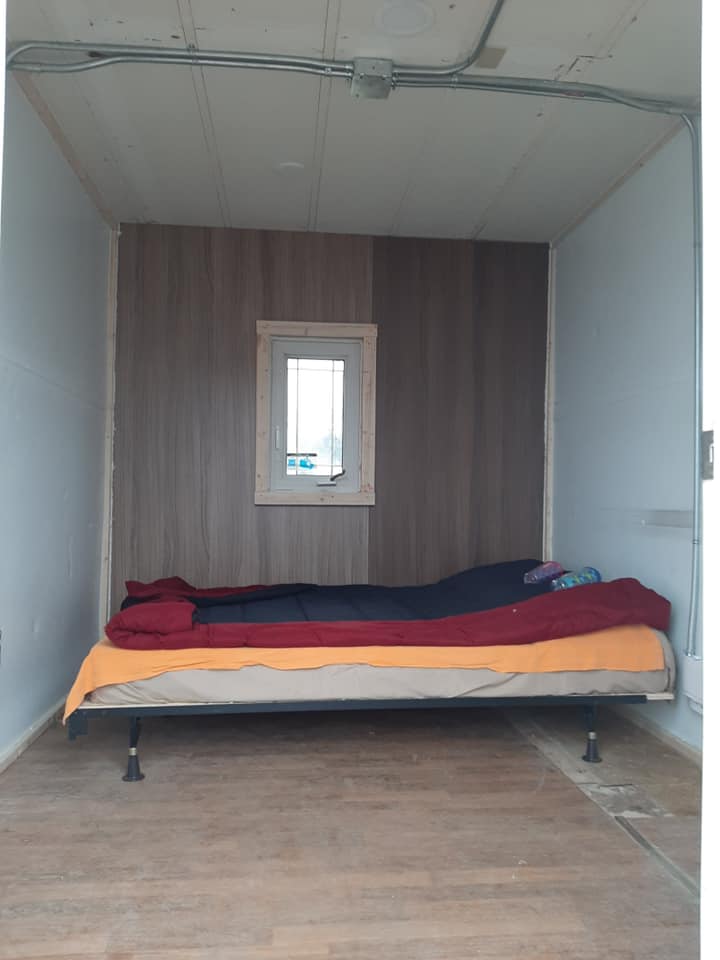
Single bed room on Elizabeth St. W.I.S.H site
On the grounds of the Carling Heights Optimist Community Centre now sit trailers, positioned to face each other and create a courtyard between them. Multiple sets of doors and wooden steps lead to individual rooms. There are 30 beds -a few of which are double to accommodate for couples who would otherwise have to split up in the traditional shelter system. Pets are also allowed at the site, another factor that would have made residents unsuitable for other accommodations.
Various residents have chosen to fashion their rooms using their unique sense of interior decor. One woman used inflated condoms as balloons and turned her individual room into a nightclub for herself. She has her own space and made a party of it. No one tells her not to. There is no curfew here either. No one is told what to do or when to do it. It is a warm and dry community that contrasts the encampments along the Thames River that were previously home to many of the people here.
This community is not without problems, however. A few times during the February cold spell, while residents lay warm in their rooms, outside of the trailers the piping system fell victim to the merciless Ontario winter. Water running through steel and metal tubes froze, causing leaks and sewage overflows in the portable which housed the bathrooms. It became evident that while using trailers for infrastructure was a quick and efficient way to house folks on the street, it was an imperfect and temporary solution. Still, frozen pipes are less painful and easier to manage than frostbite and pneumonia.
On separate occasions, neighbours in the adjacent middle-class community complained about someone wandering in their backyard and a vehicle break-in. However, Kramers said that upon further investigation, neither incident was connected to any resident of the pop-up shelter.
“There is a level of misunderstanding when it comes to homeless individuals and unfortunately they are often blanketed with a criminal prejudice. While there are criminals within the homeless sector, not all homeless people are criminals,” said Kramers. She assures that the site is staffed around the clock and that security is always present. City support is on site regularly to maintain the surrounding areas which includes McMahen Park.
“Educating and communicating with neighbours has been important. We had to reassure them that this was a temporary solution to a pandemic and that it is to end on April 30th,” said Kramers.
With that date sneaking up quickly and the original intent for these shelters to be temporary, the hope is that the city agencies have helped the residents transition into permanent housing during the past few months. Residents have had the opportunity to open up bank accounts as well as get ID and proper documentation. Alternatively, community groups have been anticipating the end of city funding by exploring other avenues for financial support.
“If it gets to the point where they are going to start kicking people out by force, I’m not above chaining myself to a fence,” half-joked Courey.
